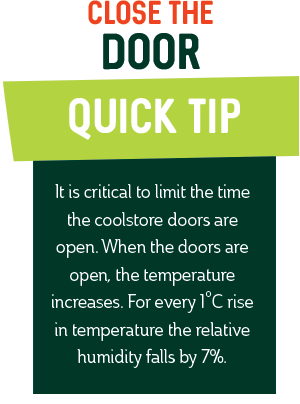Ethylene Monitoring and Removal
Ethylene is a naturally occurring gas which is released by fruit such as bananas, apples, pears and kiwifurit as they ripen. The gas itself is an extremely effective ripening agent. Even at very low concentrations it has the ability to trigger the ripening of kiwifruit. In order to optimise storage life of your fruit, it is important to ensure coolstores are ethylene-free, with a concentration below 0.03ppm.
Sources of ethylene typically include ripening or rotting fruit, fumes from internal combustion engines, as well as cigarette smoke. Preventing the build-up of ethylene by keeping the sources out of the coolstore where possible.
-
Try to avoid storing kiwifruit with other ethylene producing fruit such apples, bananas, pears.
-
Remove soft fruit from pack. As kiwifruit soften there is an increase in the rate of ethylene production. This increase is very small in good quality fruit until the fruit becomes very soft. One piece of soft kiwifruit will cause the entire pack to ripen.
-
Only use electric forklifts.
 (**Need to find or develop Ethylene related image**)
(**Need to find or develop Ethylene related image**)
The accurate monitoring of ethylene requires laboratory-grade equipment. This is because the concentration of ethylene which can trigger the ripening process of kiwifruit is very small. We recommend that you assess your coolstore's ethylene levels regularly if storing kiwifruit medium to long term.
If you find the concentration is higher than 0.03ppm, there are a number of ways you can remove ethylene from your coolstores, including:
-
Use of ozone from UV lamps.
-
Various chemical absorbers and catalytic conversion.
-
Venting the store with fresh air. (Note: sometimes outside air may do more harm in heavily polluted environments.)



